Minerva, founded in 1858 as H. & C. Robert in the Swiss Jura village Villeret and renamed Minerva SA in 1929, remains one of the great guards of traditional chronograph crafts. The first chronograph movement, the caliber 19-9, made his debut in 1908, and for over 165 years, his workshops have produced some of the best handmade, manually wounded movements in watchmaking. Montblanc, which revived and integrated Minerva almost two decades ago, continues to celebrate this horological heritage with a timepiece that merged classic craft with brave, contemporary expression. Under these, the Minerva chronograph from 1858 is one of the most convincing interpretations. The latest referee. 134281 brings a dramatic new warmth with brown coated bridges, yellow gold accents and the same architectural depth, which is improved by the sapphire windows into the middle of the case. Let's take a closer look.
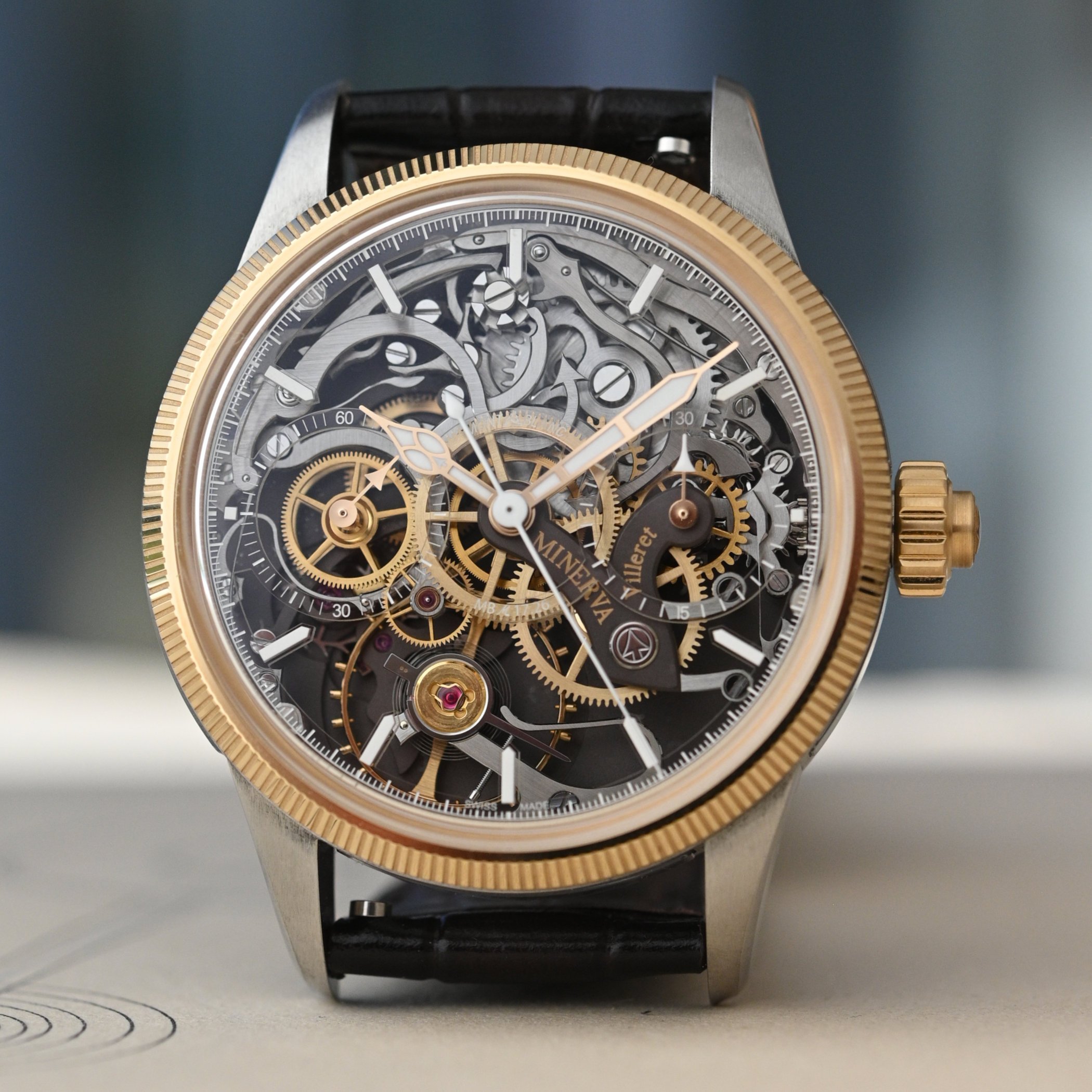

The design “Unveveiled Secret” arrived for the first time in 2022 and in 2023 came in need with a white Golden -Lünette (lit. 131155), which last year followed by a crisp, colder version in steel with a white gold bezel (ref. 133296). The case details remain the same as in the earlier reference: a robust diameter of 43 mm and a height of 14.78 mm with a mixture of polished and satined surfaces that only let the light play a little. The proportions on the wrist feel brave and yet balanced, big enough to present the depth of the movement, but compact enough to be portable. Where the new output is different is warmth and detail. As already mentioned, the 134281, instead of the 18 km bezel, which can be seen on the 133296, decides for 18 carat yellow gold the light and immediately captures the light and captivates with the gold-colored wheels of the reverse caliber.
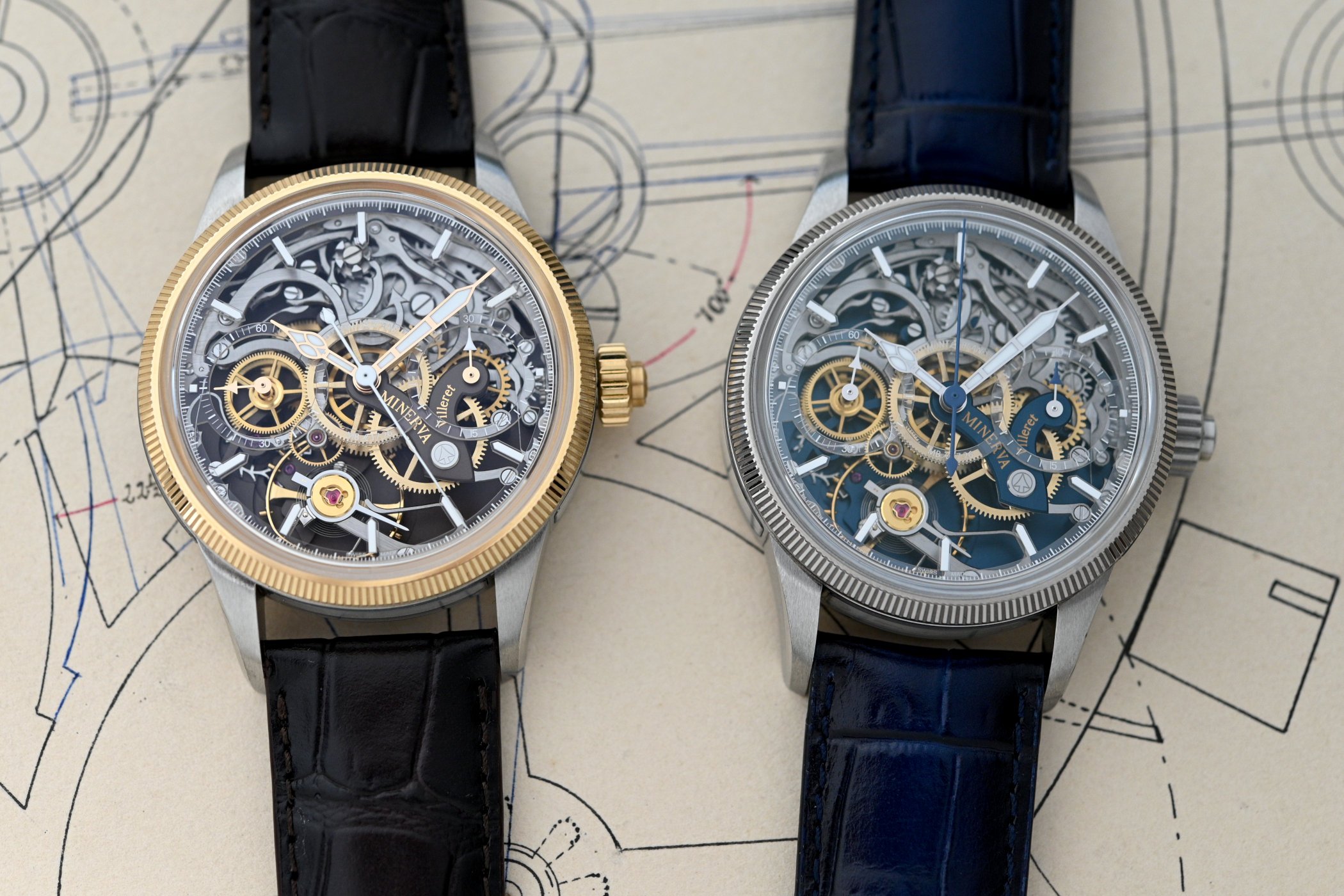
 Ref. 134281 & Ref. 133296 side by side.
Ref. 134281 & Ref. 133296 side by side.


The Minerva Chronograph Ref. 133296, which was revealed in 1858.
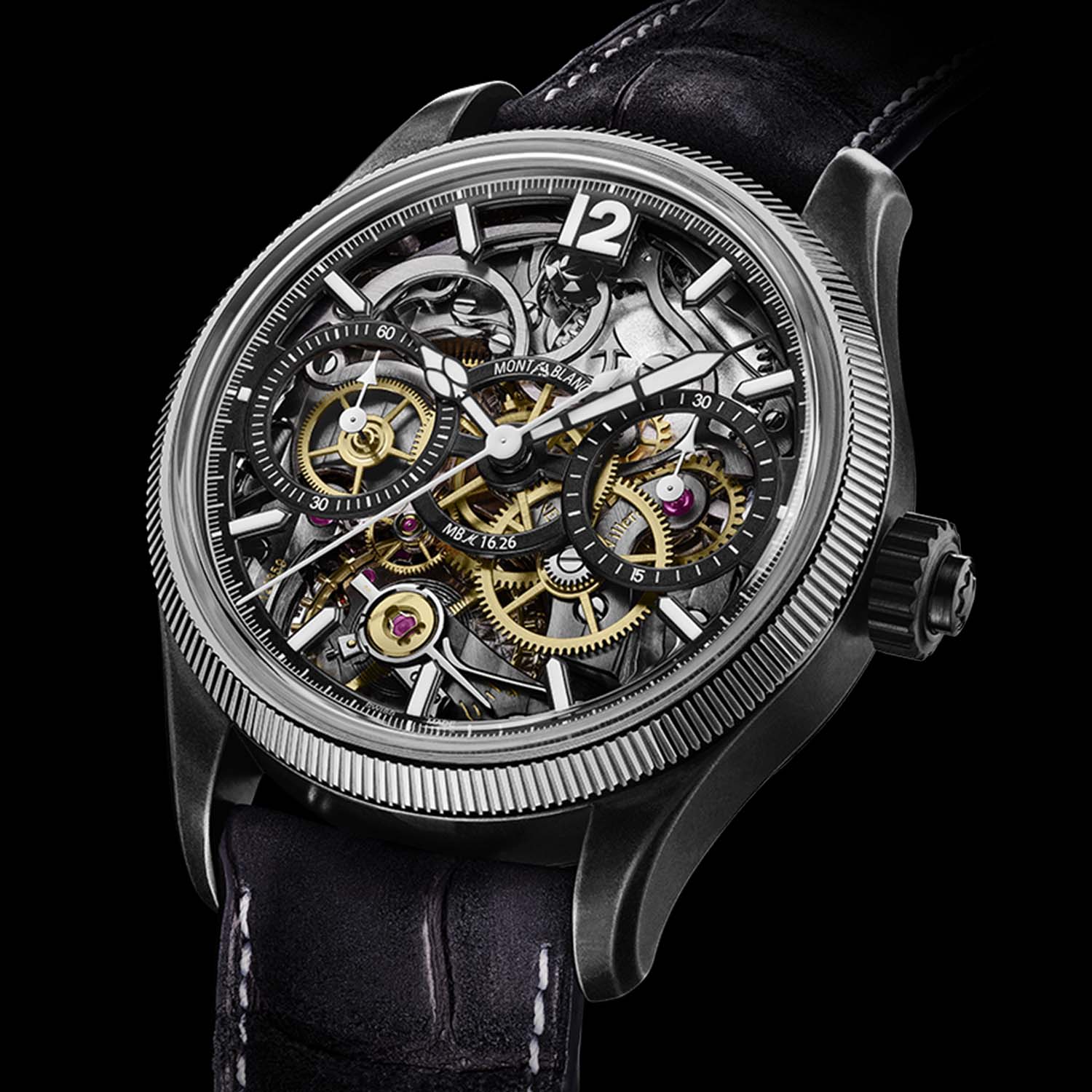

The Minerva Chronograph Ref. 131155, which was revealed in 1858.
The corrugated crown is also relief with Montblanc's emblem, with the integrated monopusher that controls the chronograph mechanism and remains true to the historical single button design from Minerva. Five sapphire crystal openings cut into the middle of the case and let light from the sides into the caliber. When you look through these windows, you look an insight into the gear and lever that are usually hidden – a great way to give the display even more dimensionality.
The dial is the magic here. While it appears skeletonized at first glance, a closer look shows the entire historical chronograph caliber that is turned onto the dial. The MB M17.26 caliber is a further developed descendant of the MB M16.26 from the earlier version of the unveiled Minerva monopus chronograph of 1858. The 16.26 is the classic Minerva M 16.29, which is based on the original Minerva 17 -league caliber 17-29 from the 1930s. The 16.26 was turned over from front to back so that you see the regulating organ, the column wheel, the train and all bridges when you read the time or activate the Chrono.


The new, brown -coated German silver bridges and plates are a considerable upgrade here. Compared to the classic untreated German silver finish, the brown color gives a rich, vintage tone that combines perfectly with the yellow gold beetle. This finish is not only a color, but also the fine hand fishing, circular grain and polished sloping, for which Minerva movements are famous.
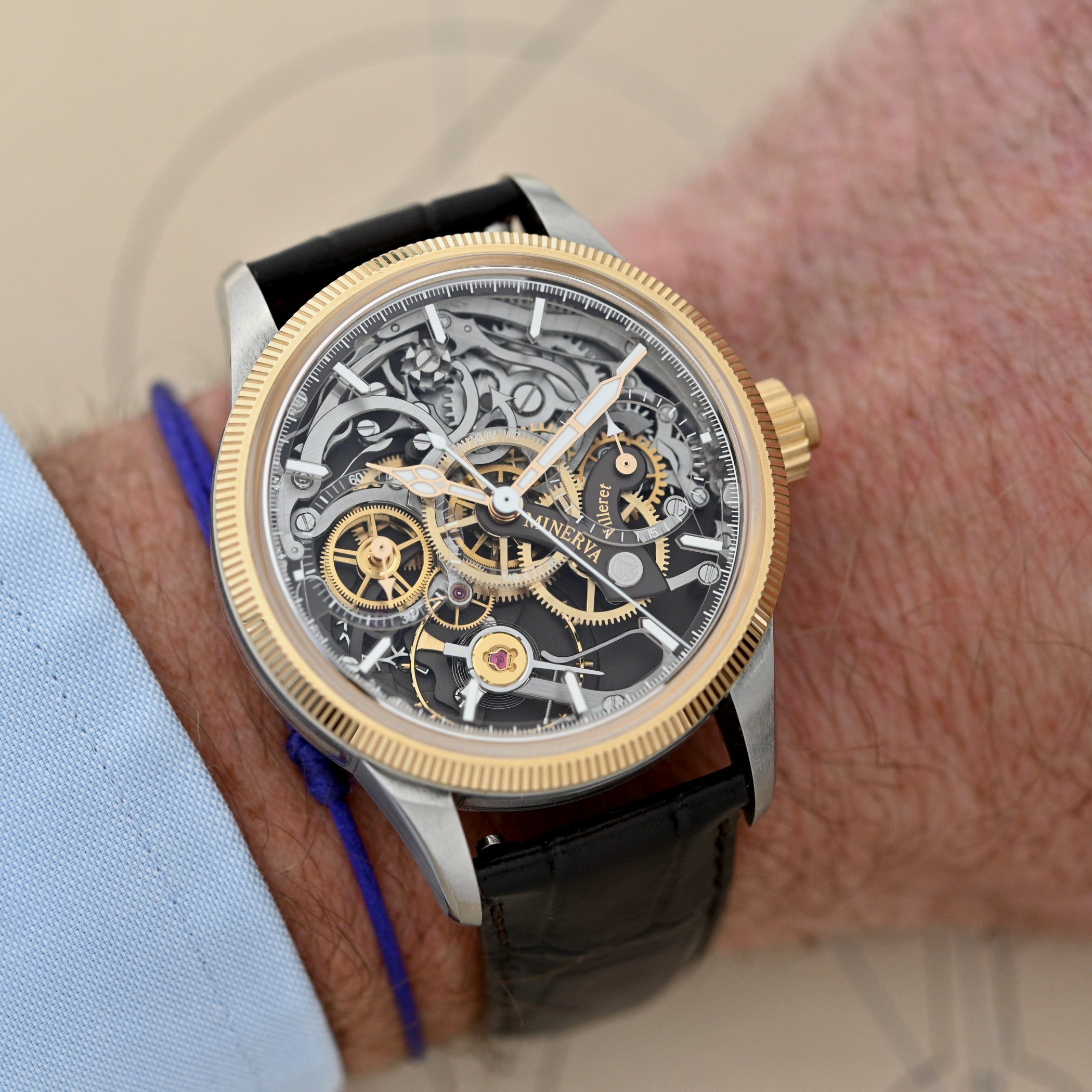

Details such as the yellow gold -colored equipment burst open against the darkened bridges and appreciate clear layers. It is a miniature architectural stage: bridges on pillars, the legendary Minerva arrow and the large, finely cut chronograph bridge, inspired by Minerva's patent from 1912. Everything is completely exposed, but it never seems chaotic. There is a natural river, like your eye at around 12 p.m. from the column wheel to the open little seconds (9 a.m.) and the 30-minute chronograph register (3 a.m.), both in Sapphire with white markings. To ensure that the readability of all this mechanical miracle is not completely lost, Montblanc fits on the saphirring, and the hands in front of the sapphire ring with gold-coated hands, which are filled with white, white, stand out in front of the brown and golden background.
The key specifications remain for movement. With a column wheel and horizontal clutch operated by the monopus, it is manually with a column wheel and a horizontal clutch and comprises 291 components, by hand in Villeret, including the large 14.5 mm equilibrium, which beats with 18,000 vibrations/hour. It has a 50-hour current reserve, which is okay. The back is closed with an engraved steel case, which represents the historical Minerva production, an allusion to the place where every movement is still manufactured and decorated.
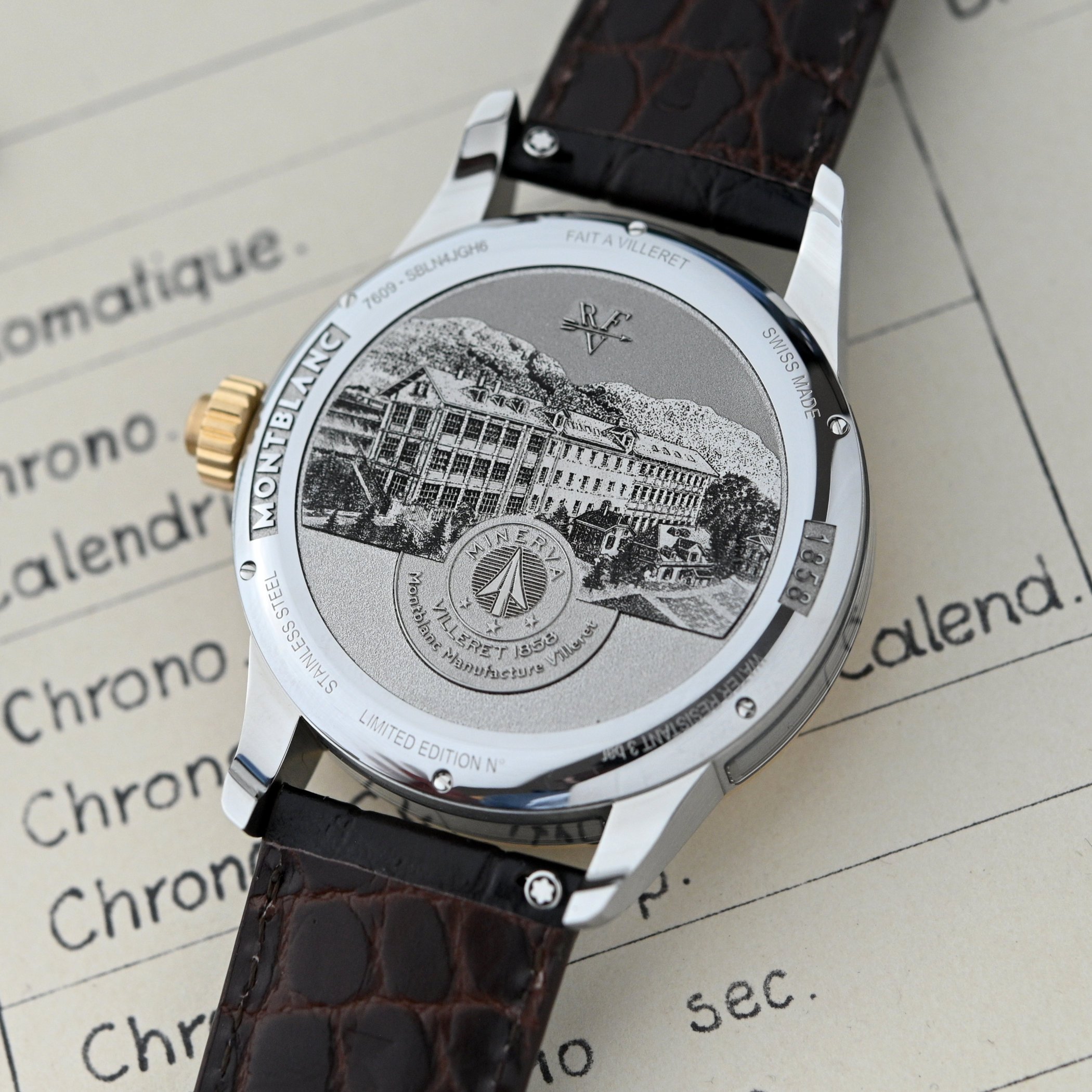

The new Montblanc 1858 Minerva Chronograph, which is unveiled, is combined with a brown Sfumato calf leather strap with an alligator printing, which is wonderfully supplemented by the watch. The warm tone of the belt corresponds to the golden and brown palette of the housing and movement, while Montblanc's triple closure with a fine adjustment keeps the watch safe and comfortable.
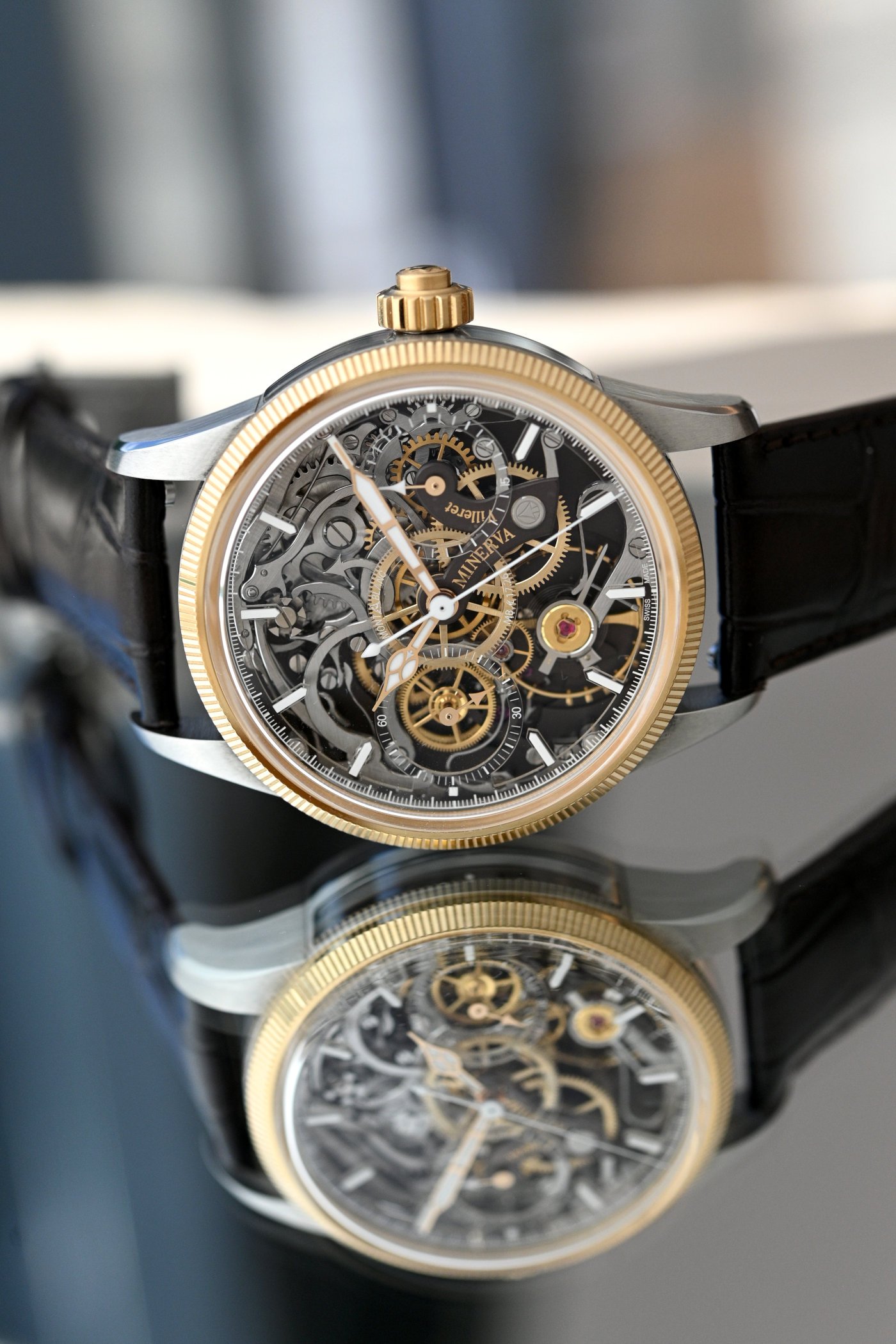

Compared to the colder look of the referee. In 133296 the new 134281 feels like a piece that is to be noticed. It is still held back in its classic finishing, but the warm palette and the yellow gold elements make it a bit more theatrical, dramatic, in a good sense. The warm, expressive details feel clearly, and that is exactly what a modern minerva should be. The price is 55,000 EURAnd the watch is a limited series of 100 parts.
For more information, see Montblanc.com.
https://monochrome-watches.com/the-montblanc-1858-unveiled-minerva-chronograph-a-warm-new-face-for-minervas-reversed-marvel/